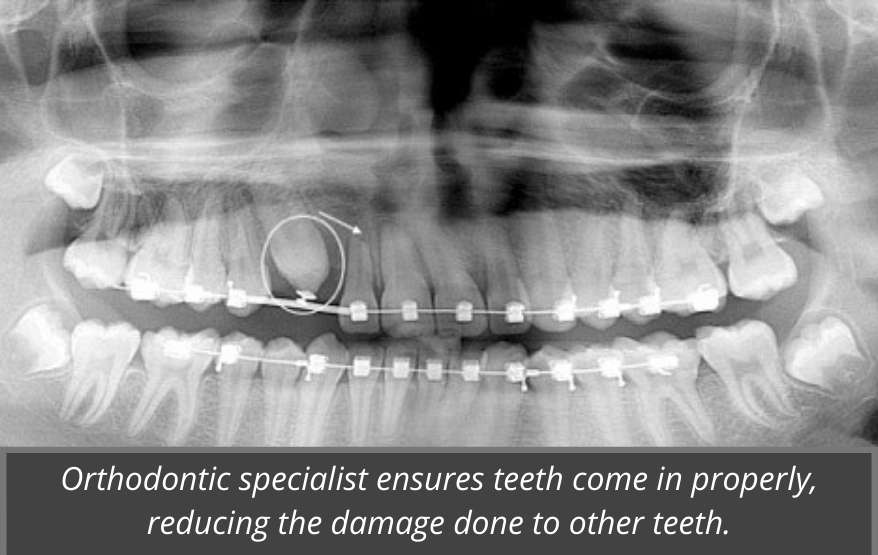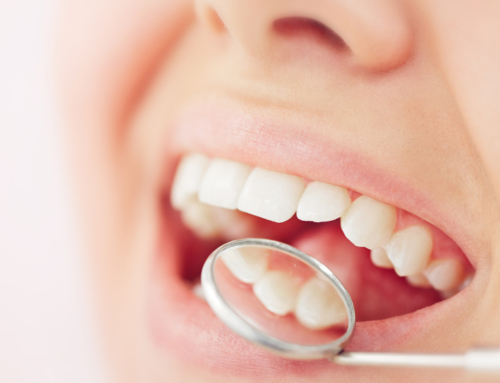How Orthodontists Treat Impacted Teeth

Are you wondering how orthodontists treat impacted teeth? Or are you not even sure what it means if you have impacted teeth? Well, you’ve come to the right place!
We know that everyone’s smiles come together at different stages. And, because of that, your child’s teeth may come in faster or slower than another child’s. Some kids will get their adult teeth early and some will get them on the later end of the spectrum. Now, all of that is normal. But, if your child lost one or more baby teeth and their adult teeth just aren’t coming in, he or she may have impacted teeth.
Most often, impacted wisdom teeth are a problem. So you may not notice this issue with younger children. And, in those cases, you’ll likely need oral surgery to correct the problem. But sometimes, impacted teeth happen in other parts of your mouth. That’s when your orthodontist may be able to treat the teeth with braces.
In this post:
- Treating Impacted Wisdom Teeth
- Impacted Canines and Other Teeth
- Why You Should Treat Impacted Teeth
- Optimal Interventions and Scheduling Treatment
Treating Impacted Wisdom Teeth

CREDIT: DR. EMILIA D. TANEVA
According to the Mayo Clinic, wisdom teeth usually come in between the ages of 17 and 25. By that age, all your other teeth should have come in. You may have already finished with braces for teeth straightening.
But, if your mouth is fairly full, you may still have impacted wisdom teeth. With this condition, the wisdom teeth may not grow in. Or, they may remain partially hidden by your gums. Sometimes, the impacted wisdom teeth do grow in. But they grow in the wrong direction.
It’s important to extract impacted wisdom teeth or you may experience serious dental complications. Because impacted wisdom teeth can damage the roots of other molars. They also experience a higher rate of tooth decay, can increase your risk for gum disease, and may even cause cysts to develop in your jawbone. Luckily, you can remove impacted wisdom teeth with simple oral surgery. And this problem should not interfere with your other orthodontic treatments.
Other Impacted Teeth

CREDIT: DR. EMILIA D. TANEVA
Aside from wisdom teeth, the most common impacted teeth are upper canines. Those are the pointy teeth on the corners of your mouth that help you tear food. In fact, studies suggest that almost 2% of participants had impacted canine teeth. And, of those individuals, 22% had impactions affecting both canine teeth.
Why are canines the most frequently impacted? They’re the last ones to come to the party, growing in after premolars and incisors have already found their spots. So, there’s not always room for these teeth to grow in properly.
Side Effects of Impacted Teeth

CREDIT: ORTHODONTICS AUSTRALIA IMAGES
Impacted teeth can affect the appearance of your child’s smile, leaving noticeable gaps. And, like impacted wisdom teeth, they can also trigger unwanted symptoms. Side effects of impacted teeth include:
- Infection
- Nerve damage
- Cavities and tooth decay
- Root damage to adjacent teeth
- Gum disease
- Chronic bad breath or a bad taste in your mouth
- Swollen gums and lymph nodes
Not everyone with impacted teeth will develop all or any of these symptoms. But even if impacted teeth don’t cause discomfort, they do affect the smile’s appearance. Luckily, orthodontic treatment can help treat impacted canines and other teeth.
Orthodontic Treatment for Impacted Teeth

CREDIT: ORTHODONTICS AUSTRALIA IMAGES
There’s no way to prevent impacted teeth. In fact, there might be a genetic link to this problem. But an orthodontist can treat this condition.
To begin, you’ll need dental x-rays to spot the tooth that hasn’t grown in. Next, you’ll need braces to reposition the adjacent teeth—this will help make room for the impacted teeth to descend. At this point, some patients will need oral surgery. The procedure will remove some of the gum tissue surrounding your impacted tooth. We call this treatment exposure.
After these steps, your orthodontist can get the tooth to descend. We place a bracket and chain on the impacted tooth, then connect that chain to the wire and brackets on the main braces. In this way, your impacted tooth will slowly be guided into place. And, as it progresses, your orthodontist can swap out the chain and replace it with orthodontic rubber bands.
Treating an impacted tooth can take up to a year or more, depending on which tooth is affected and how far it is from its normal position. But since you can treat an impacted tooth during the teeth straightening process, it shouldn’t dramatically extend your overall treatment time in braces.
When to Treat Impacted Teeth

CREDIT: DR. EMILIA D. TANEVA
When dealing with impacted teeth, it’s best to intervene early, while children are still growing and their jaws, palates, teeth and dental arches still have some flexibility. Still, since canines come in later on, some patients won’t notice an impaction problem until their teen years.
The earlier we treat impacted teeth, the higher the chance those teeth will move to their normal position. In some situations, impacted teeth might fuse with the bone and become permanently connected to the jaw. That condition is called tooth ankylosis. The older we get, the chances of impacted teeth becoming ankylosed get higher and those teeth will be untreatable. In those cases, the ankylosed impacted tooth will need to be extracted and a dental implant or closing the space orthodontically might be recommended.
In order to discover an impacted tooth issue, The American Association of Orthodontists suggests scheduling a panorex screening x-ray for children when they turn 7. During that time we can count their existing teeth and identify areas where impacted teeth may occur. This allows your orthodontist to intervene at the earliest opportunity. And should help you get the results you’re hoping for!
Did your children receive orthodontic treatment for impacted teeth? How was the experience? Comment below!






Leave A Comment